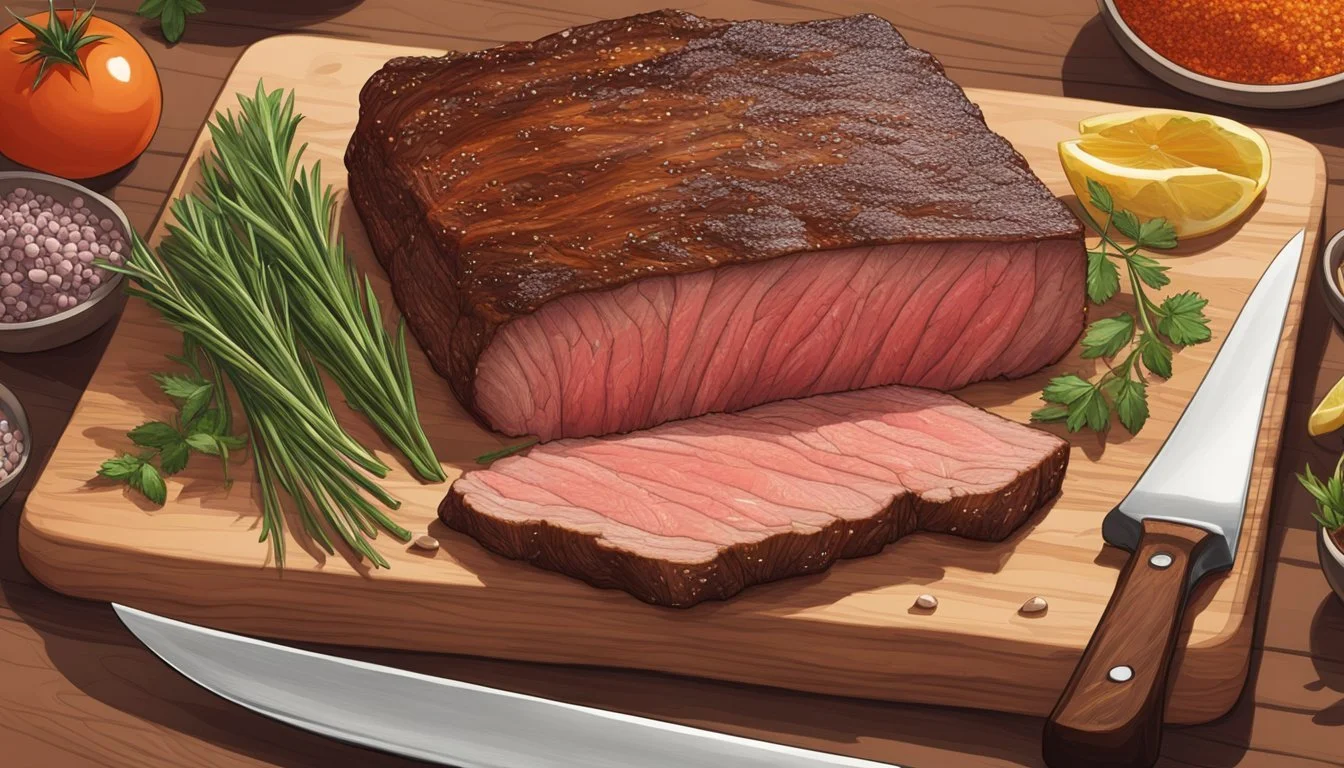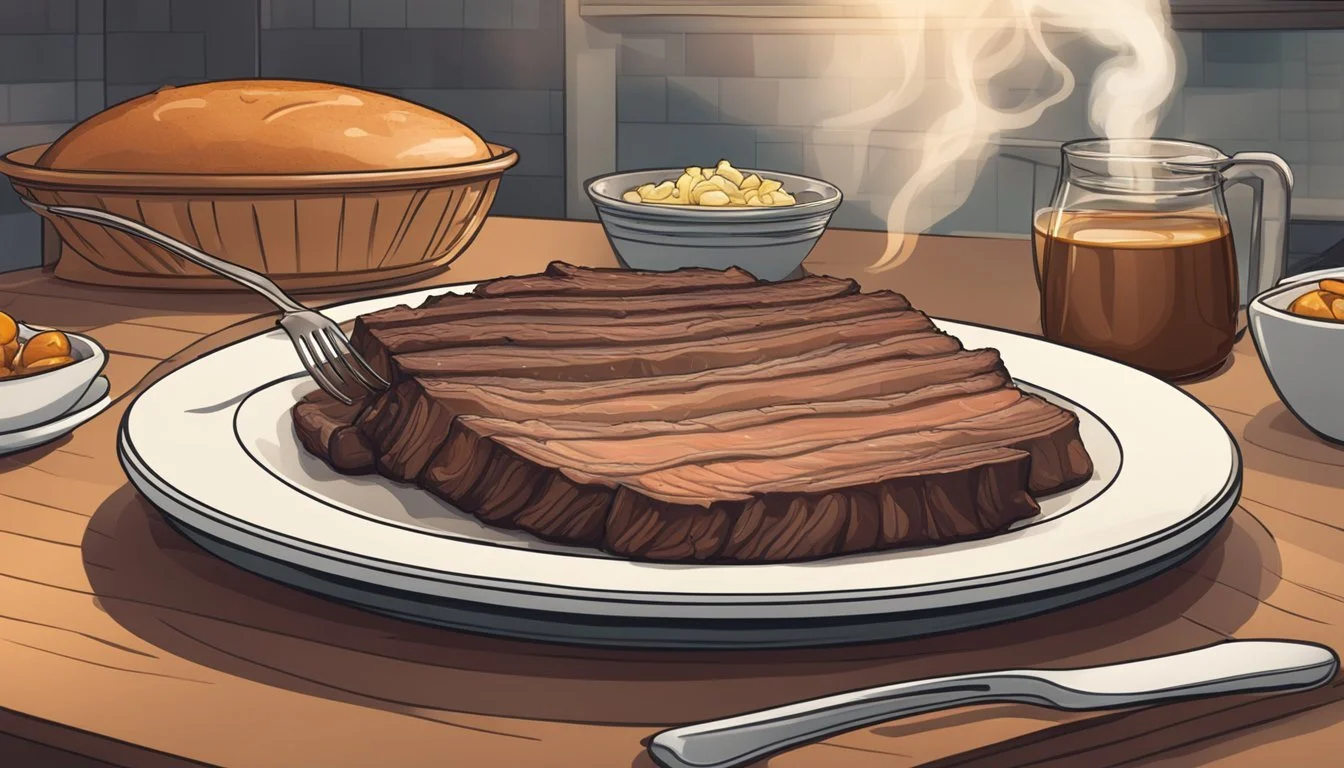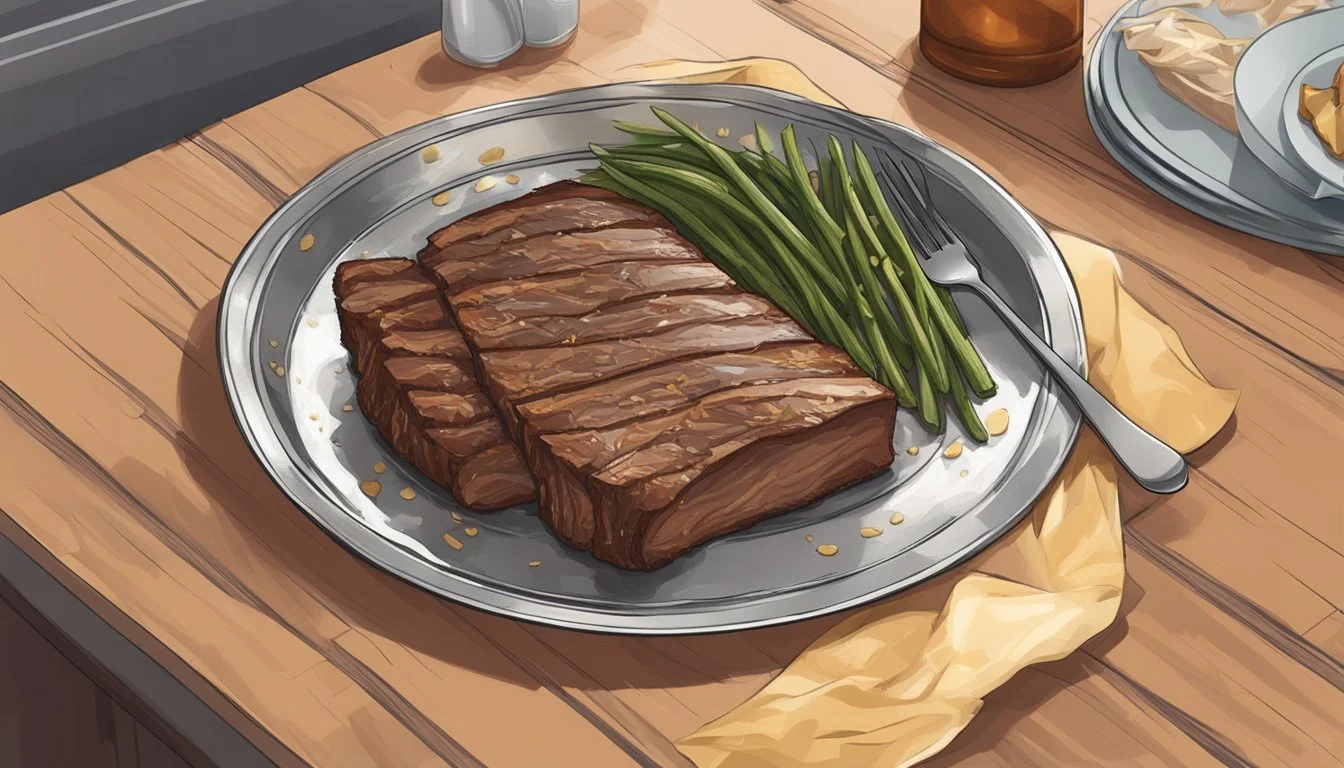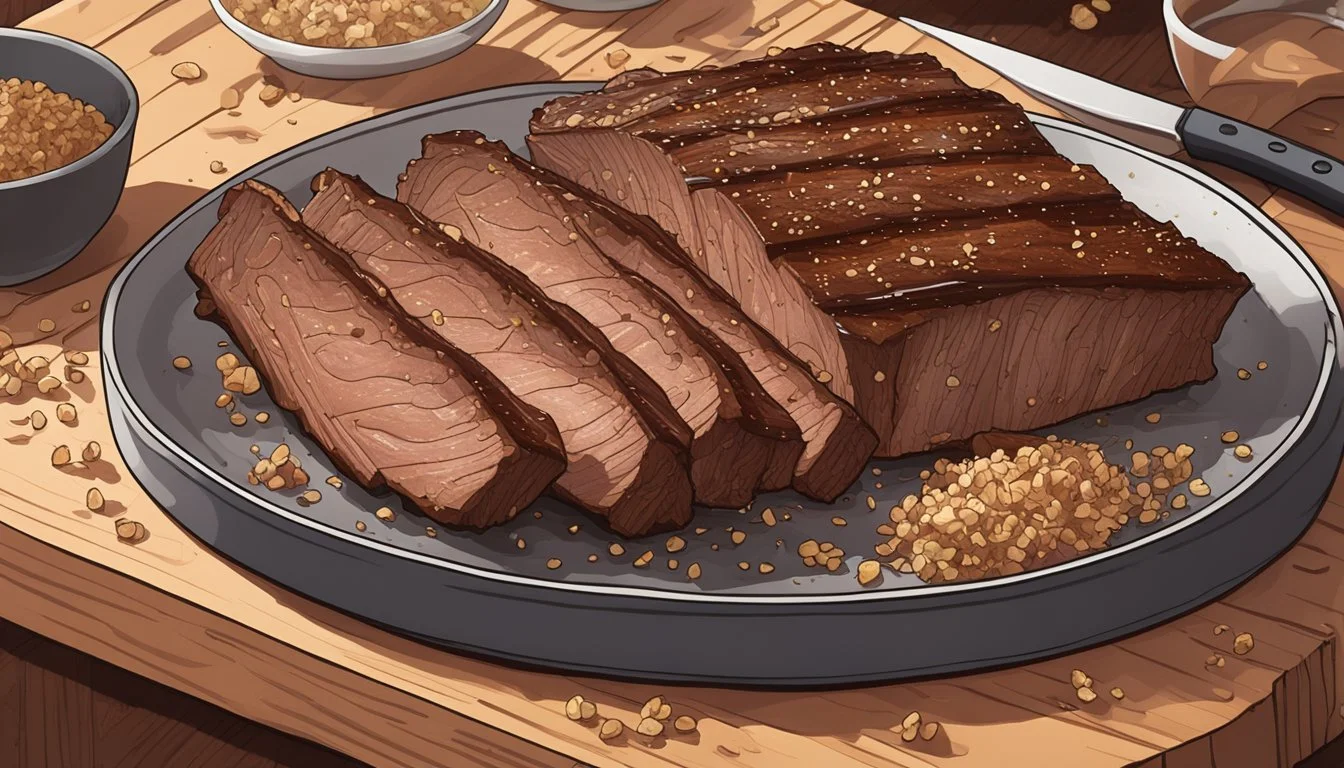How Long Does BBQ Beef Brisket Last?
Storage Tips and Shelf Life
BBQ beef brisket is a favorite among barbecue enthusiasts, but how long can you enjoy those smoky, tender slices once they've been cooked? Properly stored, cooked beef brisket lasts up to three to four days in the refrigerator. For best results, ensure the brisket is kept in an airtight container or tightly wrapped in plastic wrap or aluminum foil. This helps maintain its quality and prevent the growth of harmful bacteria.
When storing brisket for longer periods, freezing is the recommended option. Wrapped securely in a heavy-duty freezer bag, BBQ beef brisket can retain its quality for almost three months. Proper storage is crucial to enjoy the best taste and texture when you reheat your leftovers.
Reheating brisket requires care to preserve its flavors and texture. When you decide to enjoy it again, make sure to heat it to an internal temperature of 165°F to kill any potential bacteria. With these guidelines, you can savor your BBQ beef brisket to its fullest, ensuring both safety and deliciousness.
Understanding Beef Brisket Shelf Life
Determining the shelf life of BBQ beef brisket involves considering several factors such as storage conditions, temperature, and potential spoilage indicators. Proper storage and awareness of signs of spoilage can help ensure food safety.
Factors Influencing Shelf Life
Several factors influence the shelf life of BBQ beef brisket. Temperature plays a crucial role; brisket should be stored in a refrigerator at 38-40 degrees Fahrenheit. This reduces the risk of bacterial growth. Storage conditions also matter. The brisket should be placed in an airtight container or tightly wrapped in plastic wrap or aluminum foil.
Shelf life varies depending on whether the brisket is vacuum-sealed or stored in a standard container. Vacuum-sealed brisket can last longer, typically about 7-10 days in the refrigerator, whereas non-vacuum-sealed brisket generally lasts 3-4 days.
Signs of Spoilage
Identifying spoilage is essential to prevent foodborne illness. Discoloration is one of the primary signs; the meat may turn a dull or grayish color. Slimy texture is another red flag and indicates bacterial growth. A sour smell or any odor that seems off is a clear indication that the brisket has spoiled.
Mold is a late-stage indicator and should not be present if the meat has been consumed within the recommended time frame. If any of these signs are observed, the brisket should be discarded to avoid the risk of foodborne illness.
Food Safety Considerations
To ensure the safety of BBQ beef brisket, follow USDA guidelines for storage and handling. Refrigerate promptly after cooking or purchasing, and avoid leaving the meat at room temperature for more than two hours. Cross-contamination should be prevented by using clean utensils and surfaces when handling brisket.
Following proper food safety practices like washing hands before and after handling meat and ensuring the refrigerator is at the correct temperature can help minimize the risk of bacterial growth. Label and date the meat to keep track of its shelf life, ensuring it is consumed within the safe timeframe.
Storage Essentials for Brisket
Proper storage is crucial to maintaining the quality and safety of bbq beef brisket. This section covers the best practices for storing brisket in the fridge and the freezer.
Refrigeration Best Practices
Proper refrigeration can extend the life of bbq beef brisket while preserving its flavor and texture. To store brisket effectively, place it in airtight containers or wrap it tightly with aluminum foil or plastic wrap. This prevents exposure to air, which can lead to spoilage and drying out.
Always refrigerate brisket within two hours of cooking. Brisket stored without liquid or gravy can last up to four days in the refrigerator. If the brisket is stored in gravy or sauce, it's best to consume it within two days.
Freezing and Thawing Brisket
For longer storage, freezing bbq beef brisket is a viable option. To prevent freezer burn, wrap the brisket in freezer wrap or place it in heavy-duty freezer bags. Vacuum sealing is an excellent method for removing air and extending shelf life, allowing brisket to remain good for up to three months.
When ready to eat, it's essential to thaw brisket properly. For best results, transfer the brisket from the freezer to the fridge and let it thaw slowly. Avoid thawing brisket at room temperature, as this can lead to bacterial growth. Once thawed, brisket should be consumed within a few days.
Maximizing Brisket Freshness
Ensuring that BBQ beef brisket retains its texture, flavor, and safety involves proper storage techniques. Key factors include optimal packaging methods and careful control of moisture and air exposure.
Optimal Packaging Methods
Using the right packaging methods is crucial to preserve the brisket's freshness and smoky flavor. Wrapping the brisket tightly in plastic wrap or aluminum foil can help minimize air exposure, which in turn, slows down spoilage.
For even better results, using a vacuum seal is advisable. A vacuum-sealed brisket prevents any air from entering, maintaining the meat's quality for a longer period. Another option is wrapping the brisket in butcher paper, which is air-permeable but can still protect the meat.
An airtight container is also effective. This method ensures the brisket remains enclosed without any air, further delaying spoilage. Proper packaging is not just about extending life but also about keeping the brisket's texture and flavor intact.
Controlling Moisture and Air
Keeping the brisket moist is key to maintaining its flavor and texture. Storing the brisket in its own cooking juices or adding a bit of beef broth can help retain moisture during reheating.
Properly controlling air exposure is just as important. Using airtight containers or vacuum-sealing helps eliminate air, preventing bacteria growth and spoilage. It’s also a good idea to reheat the brisket gently to reach an internal temperature of 165°F, ensuring safety and quality.
Proper control of moisture and air exposure guarantees the brisket remains flavorful and safe to eat for longer periods. This not only enhances the eating experience but also ensures the meat's smoky flavor and texture are preserved.
Reheating Stored Brisket
Reheating stored brisket correctly is crucial to maintaining its tenderness and flavor. The following guidelines ensure your brisket remains juicy and safe to eat.
Safe Reheating Temperatures
When reheating cooked brisket, it's essential to bring the internal temperature to at least 165°F (74°C) to ensure it is safe to consume. Using a meat thermometer can help you monitor the temperature accurately. Always check the thickest part of the meat to ensure uniform reheating. Avoid reheating the brisket multiple times as it can result in dryness and potential food safety issues.
Reheating Techniques
Oven: Preheat the oven to 325°F. Place the brisket in an ovenproof dish, drizzle it with original cooking liquid or beef broth, and cover with foil. Heat until the brisket reaches the required internal temperature.
Microwave: Though not recommended for large cuts, the microwave can be used for smaller portions. Place the brisket on a microwave-safe plate, cover it with a microwave-safe lid or wrap, and reheat on medium power in short intervals, checking the temperature frequently.
Using these methods, you can retain the moisture and flavor of the brisket while ensuring it is safe to eat. Ensure the meat is always fully heated through to maintain both its quality and safety.
Using Leftover Brisket
Leftover brisket can be transformed into a variety of delicious dishes. Knowing how to properly slice and store the meat will help maintain its flavor and texture.
Creative Recipe Ideas
Sandwiches: Sliced brisket makes for hearty sandwiches. Layer it on toasted bread with pickles, onions, and your favorite barbecue sauce.
Brisket Tacos: Dice the brisket and top with fresh salsa, cilantro, and a squeeze of lime. Use soft corn or flour tortillas.
Chili: Add chunks of brisket to a pot of homemade chili for a smoky twist. Combine with beans, tomatoes, and spices to enhance the flavor.
Baked Beans: Mix sliced brisket into baked beans for added depth. Include spices and brown sugar to balance the flavors.
Slicing and Serving Tips
To retain the juiciness of leftover brisket, slice it against the grain. This method helps to keep slices tender.
Storage: Wrap the brisket tightly in plastic wrap or aluminum foil. Place it in an airtight container to prevent moisture loss.
Reheating: For best results, reheat brisket slowly in an oven at around 250 degrees Fahrenheit. This method helps prevent drying out. Alternatively, use a microwave for quicker results, but take care to keep the brisket moist by covering it.
Serving: Serve brisket slices warm. Cold brisket can also be delicious in salads or sandwiches, offering a different texture and flavor profile.
Conclusion
Proper storage of BBQ beef brisket is essential for freshness and safety.
Refrigeration: Store cooked beef brisket in an airtight container or wrap it tightly in plastic wrap or aluminum foil. It can last 3-5 days in the fridge.
Freezing: For a longer shelf life, freeze the brisket. Properly stored, it can last up to three months.
Reheating: When reheating, maintain the flavor by adding a small amount of cooking liquid or beef broth to keep it moist.
Safety Tip: Avoid leaving brisket at room temperature for too long to prevent bacterial growth.
By following these guidelines, one can enjoy the rich, smoky flavor of beef brisket while ensuring it remains safe to eat.







